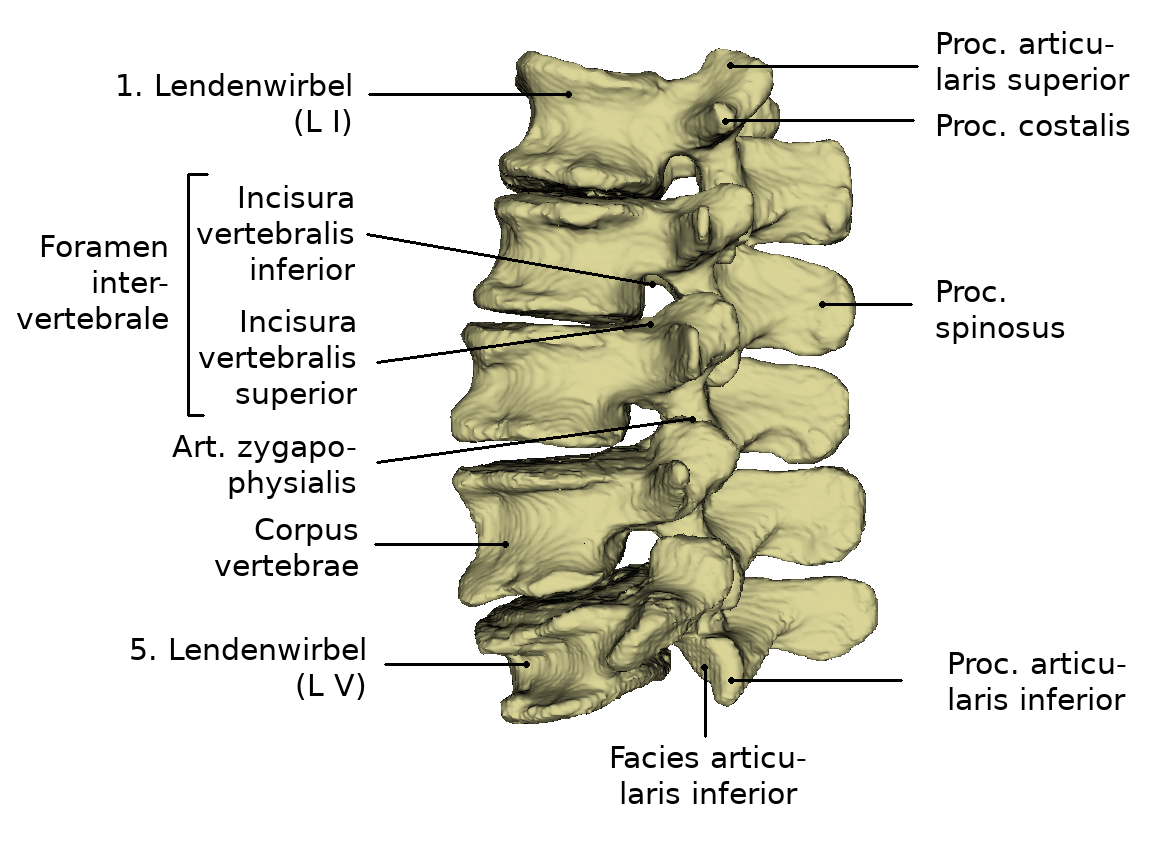Lendenwirbelsäule/en: Unterschied zwischen den Versionen
(Die Seite wurde neu angelegt: „==Movement==“) |
(Die Seite wurde neu angelegt: „The mobility of the spine is extended by the lumbar spine. The bending of the body is carried out via the lumbar vertebrae. This is done via a transverse axis…“) |
||
| Zeile 53: | Zeile 53: | ||
==Movement== | ==Movement== | ||
| − | + | The mobility of the spine is extended by the lumbar spine. The bending of the body is carried out via the lumbar vertebrae. This is done via a transverse axis in the lumbar spine. Lateral inclination is possible in the same way as in the cervical spine. | |
==Funktionen== | ==Funktionen== | ||
Version vom 27. Mai 2020, 14:45 Uhr
The lumbar spine is located between the breastbone and the Sacrum and tailbone. It usually consists of five Structure of a vertebrae. It has a natural lordosis when viewed from the side and is heavily loaded when walking upright.
Anatomy
The five lumbar vertebrae, which are usually five, form the lumbar spine. The lumbar vertebrae connect caudally to the twelfth thoracic vertebra. Thus, the lumbar spine forms the basis of the Trunk. There is a physiological forward curvature. This is a lordosis as it is also found in the Cervical spine. Since the lumbar vertebrae are subjected to greater stress during gait, they show a more pronounced development of the vertebral bodies and spinous processes. The spinous processes here are flattened on both sides and very strongly pronounced. The vertebral bodies have a transverse oval shape. Compared to the other vertebrae, they are high and broad. The powerful articular processes (procc. articulares superior and inferior) have slightly bevelled joint surfaces. These are vertically and almost sagitally extended. The massive vertebral arches enclose a triangular vertebral hole and unite to form the spinous process.
Just as in the other sections of the spine, the intervertebral discs (intervertebral discs) and ligaments are located between the lumbar vertebrae. The transverse processes become longer from the first to the third lumbar vertebrae. Then they shorten again up to the fifth lumbar vertebra. They are also rib rudiments and are therefore called procc. costales. As a result, the transverse processes of the lumbar vertebrae are not homologous to the transverse processes of the other vertebral segments. The procc. mamillares (muscle cusps), which lie on the outer surfaces of the upper joint processes, serve as attachment points for autochthonous back muscles.
The peculiarity of the lumbar region is that the number of lumbar vertebrae in humans can vary. If the last lumbar vertebra grows together with the first sacral vertebra, sacralisation is present. This means that a person has only four lumbar vertebrae. This phenomenon can also be present in another direction if the first and second sacral vertebrae do not fuse and there is an intervertebral disc between them. Then one speaks of a lumbalisation. The first non-adjoined sacral vertebra is thus considered to be the sixth lumbar vertebra.
Movement
The mobility of the spine is extended by the lumbar spine. The bending of the body is carried out via the lumbar vertebrae. This is done via a transverse axis in the lumbar spine. Lateral inclination is possible in the same way as in the cervical spine.
Funktionen
Die LWS trägt sowohl das Gewicht des Rumpfes als auch des Kopfes. Auch hier schützen die Wirbel das Rückenmark. Das Rückenmark reicht allerdings nur bis zum ersten oder zweiten Lendenwirbel und geht danach in einen Nervenbündel über. Die Lendenlordose dient zusammen mit der Halslordose und der Brustkyphose dazu, den Schwerpunkt über den Füßen zu positionieren.









